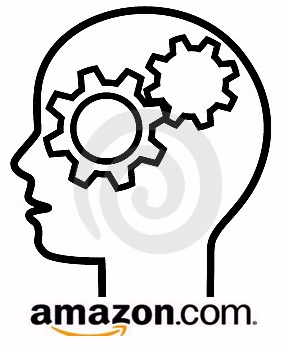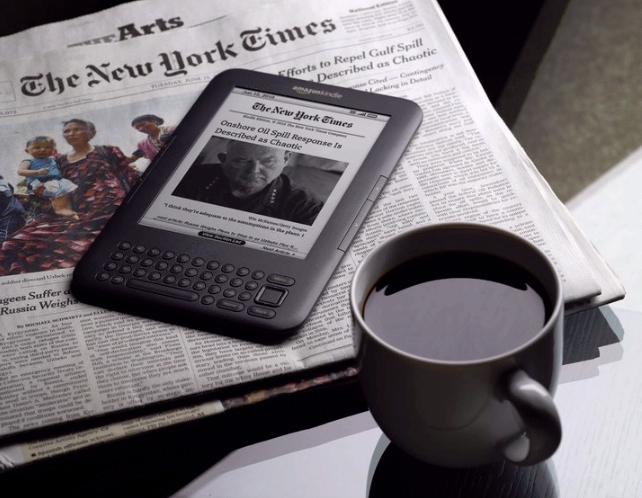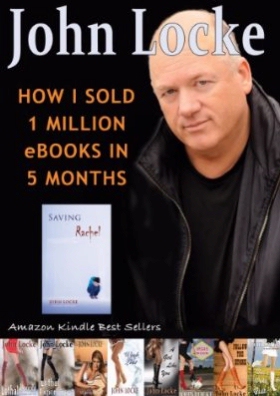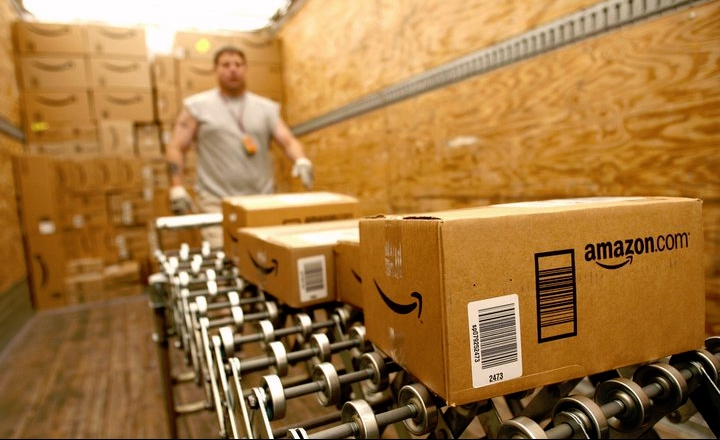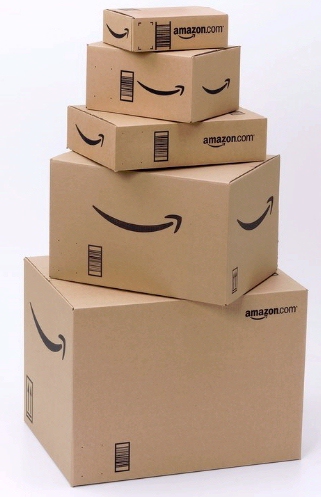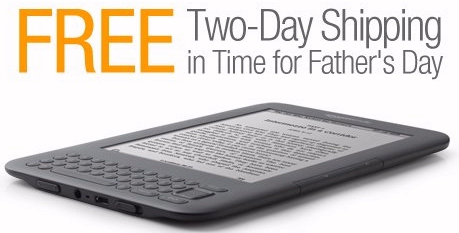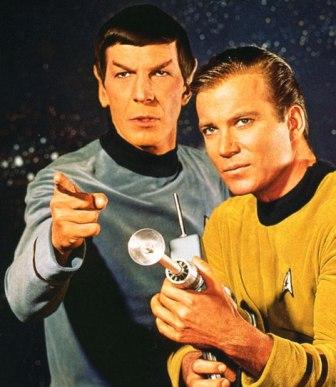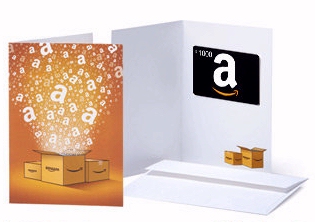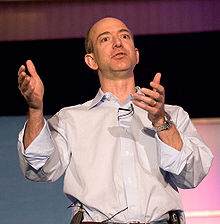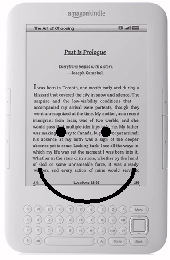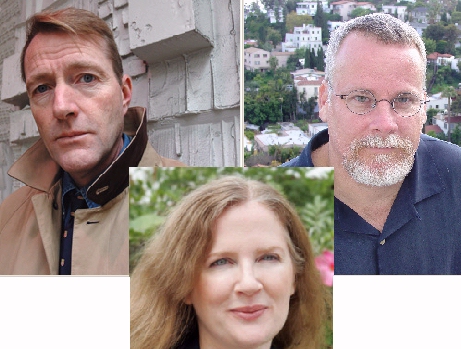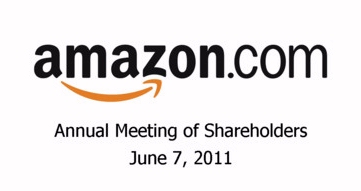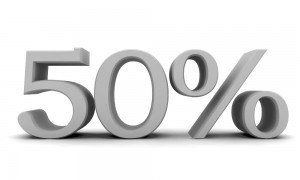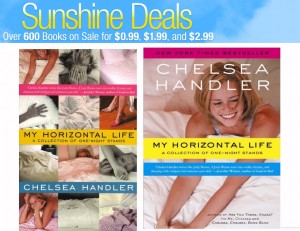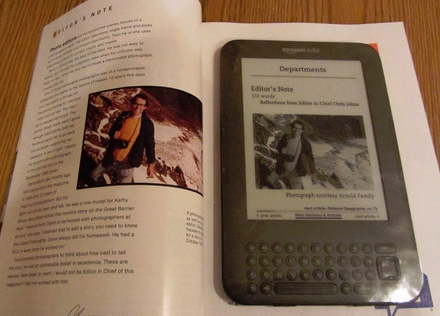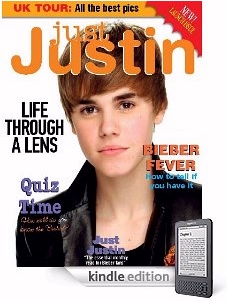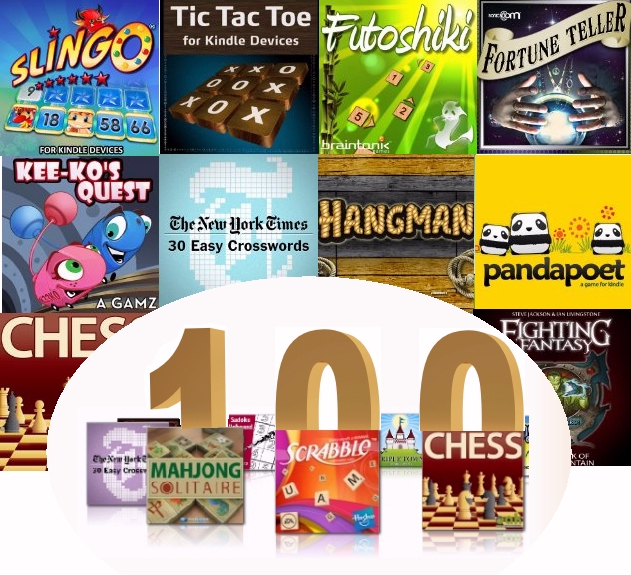
I couldn’t believe it. I checked the best-seller lists at Amazon.com, and discovered that there’s now over 100 games that are available for the Kindle — including eight free ones! Monday two more new games arrived in the Kindle store — including the really attractive “Fortune Teller.” (“Your Fortune Told on Kindle…”) But it’s part of a new trend, as different kinds of “active digital content” start appearing in the Kindle store. I’ve assembled a complete list of everything that’s available in the store’s “games” section — and discovered a few surprises.
For example, there’s now also another “game” that provides daily horoscopes, and one that helps you convert measurements — like miles to kilometers. Wednesday a new “reference title” showed up with recipes for cocktails. Another “game” lists the calories in popular fast food meals, and there’s another one which turns your Kindle into a stopwatch. There’s an appointment/calendar book, and of course the Notepad and “Sticky Notes” applications. There’s even educational flashcards for kids, plus other educational games (including one from the Scripps National Spelling Bee).
Instead of entertainment, these games are offering actual information in an interactve format. (If you’re taking your Kindle on the road, it could really come in handy!) It shows the variety of active content that’s now available in a Kindle-ready format, and it reminds me of hodgepodge of tempting apps that are available in Apple’s app store. In fact, with all these “useful” applications, it’s nice to see new games being released that are still just plain fun.
Kee-Ko’s Quest — also released Monday — has some delightfully simple graphics. There’s a bug-eyed, smiling robot named Kee-ko (who looks more like a toy car) happily traveling down a track at a factory. Players nudge the five-way controller to move Kee-Ko — and the other robots blocking her way — as she tries to reach the right side of each screen to re-unite with her long-lost robot boyfriend (named F4R4W4Y). I really liked how this game involves a character and a story, instead of just numbers and letters and abstract challenges…
But it also proves how quickly new games are arriving Amazon’s Kindle store. Two weeks ago Amazon released a new game called Pirate Stash — less than three weeks after their last new game, Thread Words! And it seems like the new games are also getting more complicated. Pirate Stash has nearly 120 different brain-teaser puzzles, enough to keep you busy for quite a while! (Pirate Stash isn’t free, but Amazon will send you a free sample with the first 15 puzzles.)
“Fortune Teller” is another example of a seemingly-simple idea with a sophisticated implementation. I loved its graphics — though I remain skeptical as to whether it can truly predict the future. The amazing “Hectar” provides one new prediction a day through a crystal ball on each of five topics — love, money, career, life, and friendship. And the game actually comes with three completely different “modes” of fortune telling — including the more traditional fortune cookie. (“Only 3 cookies can be opened a day so choose wisely.”) And there’s also a “Mystic Pyramid” which works like the Magic Eight Ball, promising “you can merely think a question and pressing the enter key…will give you an answer to the question. Ask as many times as you like!”
Last week saw the release of a new variation on Sudoku called Futoshiki, and there’s also a new text-based “choose your adventure” story called “Choice of the Vampire.” But I realized games were finally catching on for the Kindle when I convinced my friend Len Edgerly (who hosts The Kindle Chronicles podcast) to give Monopoly a try. “I have become a fan of Monopoly,” he admitted in last week’s show. (Adding “I don’t know whether to thank you for that or curse you for it.”) But I think he put his finger on exactly why it can be so enjoyable to play a game on the Kindle. “It’s a very pleasing way to take a break from whatever I’m doing — to move my little hat icon around the board…”
I’ve become almost an evangelist for games on the Kindle — and if you’ve never tried one, you’ll always wonder what you’re missing. So to help you try one, I’ve assembled a complete list of all the games currently available on the Kindle — along with their taglines in the Amazon store, and their current price.
Kee-Ko’s Quest – A Puzzle for Kindle ($1.99)
“Fortune Teller” – Your Fortune Told on Kindle ($1.99)
EA Texas Hold’em – Play the Popular Poker Game ($3.99)
Pirate Stash – A Puzzle Game for Kindle ($1.99)
Wordoku Unbound #1 – A Puzzle Collection (99 cents)
Scrabble – Play the Popular Word Game on Kindle ($4.99)
Word Search – A Word Game for Kindle (99 cents)
EA Solitaire – 12 Card Games to Play on Kindle ($3.99)
Notepad – A Note Taking Tool for Kindle (99 cents)
Calendar Pro – A Schedule Tool for Kindle (99 cents)
Calendar – A Schedule Tool for Kindle (99 cents)
Sudoku Unbound #1 – A Puzzle Collection ($2.99)
Mahjong Solitaire – A Matching Game for Kindle ($3.99)
Sticky Notes – A Note Taking Tool (99 cents)
Maze A Thon – A Game for Kindle (99 cents)
Calculator – A Calculator for Kindle (99 cents)
Snakes and Ladders game – A Game for Kindle (99 cents)
Slingo – A Game for Kindle ($3.99)
Checkers – A Classic Game for Kindle (99 cents)
Checkers – A Classic Game for Kindle (99 cents)
CodeWord – Codewords and Cryptograms for Kindle (99 cents)
Monopoly – Play the Popular Board Game on Kindle ($4.99)
Chess – A Classic Game for Kindle ($2.99)
Hangman 4 Kids – A Kindle Word Game for Children ($1.99)
NY Times Crosswords Vol. 1 – 30 World Famous Easy Puzzles ($1.99)
Word Search Volume 2 – A Word Game for Kindle (99 cents)
EA Sudoku – Play Sudoku on Kindle ($3.99)
Easy Calculator – A Calculator for Kindle (99 cents)
Blocked – Rescue the Block! – A Game for Kindle (99 cents)
NY Times Crosswords Vol. 2 – 90 World Famous Easy Puzzles) ($4.99)
Next Puzzle Game – A Matching Game for Kindle (99 cents)
Stopwatch and Timer – A Time Keeping Tool for Kindle (99 cents)
My Yoga Studio – A Yoga Partner on Kindle ($1.99)
Converter – Easy Conversions for Kindle (99 cents)
Hangman – A Word Game for Kindle ($2.99)
Triple Town – A Puzzle Strategy Game for Kindle ($3.99)
Calendar – Appointments, Birthdays, Holidays and Sticky Notes – A Schedule Tool for Kindle (99 cents)
Tic Tac Toe – A Classic Game for Kindle (99 cents)
Peg Solitaire – A Classic Solitaire Game for Kindle (99 cents)
Scripps Spelling Bee: Word Games – A Word Game for Kindle ($2.99)
Futoshiki – A Logic Puzzle for Kindle (99 cents)
The Warlock of Firetop Mountain – A Fighting Fantasy Adventure ($3.99)
Jumble, 200 Puzzles – A Word Scramble Game ($4.99)
Flip It! – A Game for Kindle (99 cents)
Choice of the Dragon – A Text-Based Adventure ($1.99)
Word Soup – A Word Game for Kindle – ($1.99)
True Backgammon – A Classic Board Game for Kindle ($1.99)
Anywhere Abs – A Workout Partner on Kindle ($1.99)
Flash Cards: Basic Math for Kids – A Learning Tool for Kindle ($2.99)
Strimko – A Logic Game for Kindle ($2.99)
Panda Poet – A Word Game for Kindle ($2.99)
NY Times Crosswords Vol. 3 – 30 World Famous Challenging Puzzles ($1.99)
Flash Cards: Fractions for Kids – A Learning Tool for Kindle ($2.99)
Fast Food Calories – Calorie Counter – A Reference Tool for Kindle ($1.99)
Daily Horoscopes 2011 – 2012 – Your Daily Horoscope on Kindle ($2.99)
Spelling Star – A Learning Game for Kindle ($2.99)
NY Times Crosswords Vol. 5 – 30 World Famous Easy Puzzles ($1.99)
Anywhere Legs – A Workout Partner on Kindle ($1.99)
24-7 Spanish – Vocabulary – A Language Trainer ($3.99)
Choice of the Vampire – A Text-Based Adventure ($2.99)
NY Times Crosswords Vol. 4 – 90 World Famous Challenging Puzzles ($4.99)
Peg Solitaire – A Puzzle Game for Kindle (99 cents)
Jumble, 50 Puzzles – A Word Scramble Game ($2.49)
Choice of Broadsides – A Text-Based Adventure ($1.99)
24-7 Spanish – Basic Phrases – A Language Trainer ($3.99)
The Citadel of Chaos – A Fighting Fantasy Adventure ($3.99)
Ultimate Music Quiz – A Trivia Game for Kindle ($1.99)
Dusk World – An Interactive Fiction Game ($2.99)
Diamond Crosswords – 50 Easy Puzzles – A Word Puzzle for Kindle (99 cents)
Match Genius – A Memory Puzzle Game ($2.99)
Jumble, 20 Puzzles – A Word Scramble Game (99 cents)
Brain Bump Literature – A Trivia Game for Book Lovers (99 cents)
Rockin Reversi – A Classic Game for Kindle ($1.99)
Ultimate Movie Quiz – A Trivia Game for Kindle ($1.99)
Symdoku Unbound #1 – A Puzzle Collection ($2.99)
Flash Cards: Alphabet and Spelling for Kids – A Learning Tool for Kindle ($1.99)
NY Times Crosswords Vol. 6 – 30 World Famous Challenging Puzzles ($1.99)
Reversi Deluxe – A Classic Game for Kindle ($1.99)
Letter Landers – An Early Reader Game for Kindle ($2.99)
24-7 German – Vocabulary – A Language Trainer ($3.99)
24-7 Italian – Basic Phrases – A Language Trainer ($3.99)
24-7 French – Basic Phrases – A Language Trainer ($3.99)
Ultimate Nature Quiz – A Trivia Game for Kindle ($1.99)
24-7 Italian – Vocabulary – A Language Trainer ($3.99)
Spelling Star Spanish Edition – A Learning Game for Kindle ($3.99)
24-7 French – Vocabulary – A Language Trainer ($2.99)
24-7 German – Basic Phrases – A Language Trainer ($3.99)
Ultimate Sci-Fi Quiz – A Trivia Game for Kindle ($1.99)
Tower of Hanoi – Kindle Edition (99 cents)
Cat Jump – Interactive Puzzle for Kindle (99 cents)
Cocktail Mixer – A Reference Title for Kindle ($1.99)
Blossom – A Puzzle for Kindle
Inheritance – A Text Adventure for Kindle
Free Kindle Games From Amazon
Thread Words – A Free Word Game for Kindle
Dots and Boxes – A Free Game for Kindle
Every Word – A Free Game for Kindle
Blackjack – A Free Game for Kindle
Number Slide – A Free Game for Kindle
Shuffled Row – A Free Game for Kindle
Video Poker – A Free Game for Kindle
Minesweeper – A Free Game for Kindle

